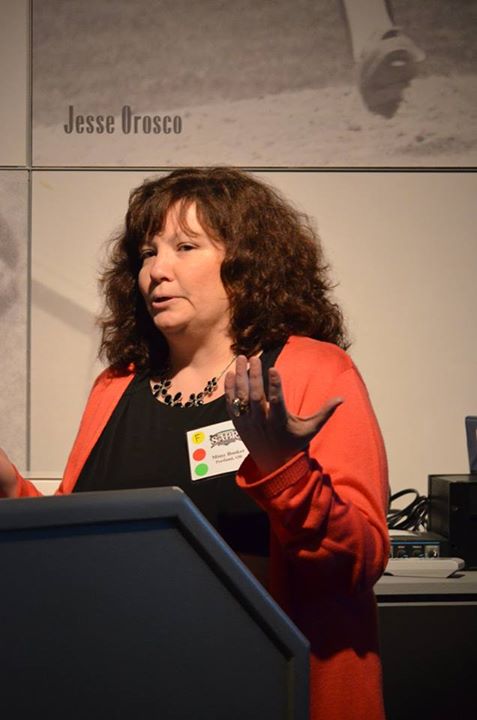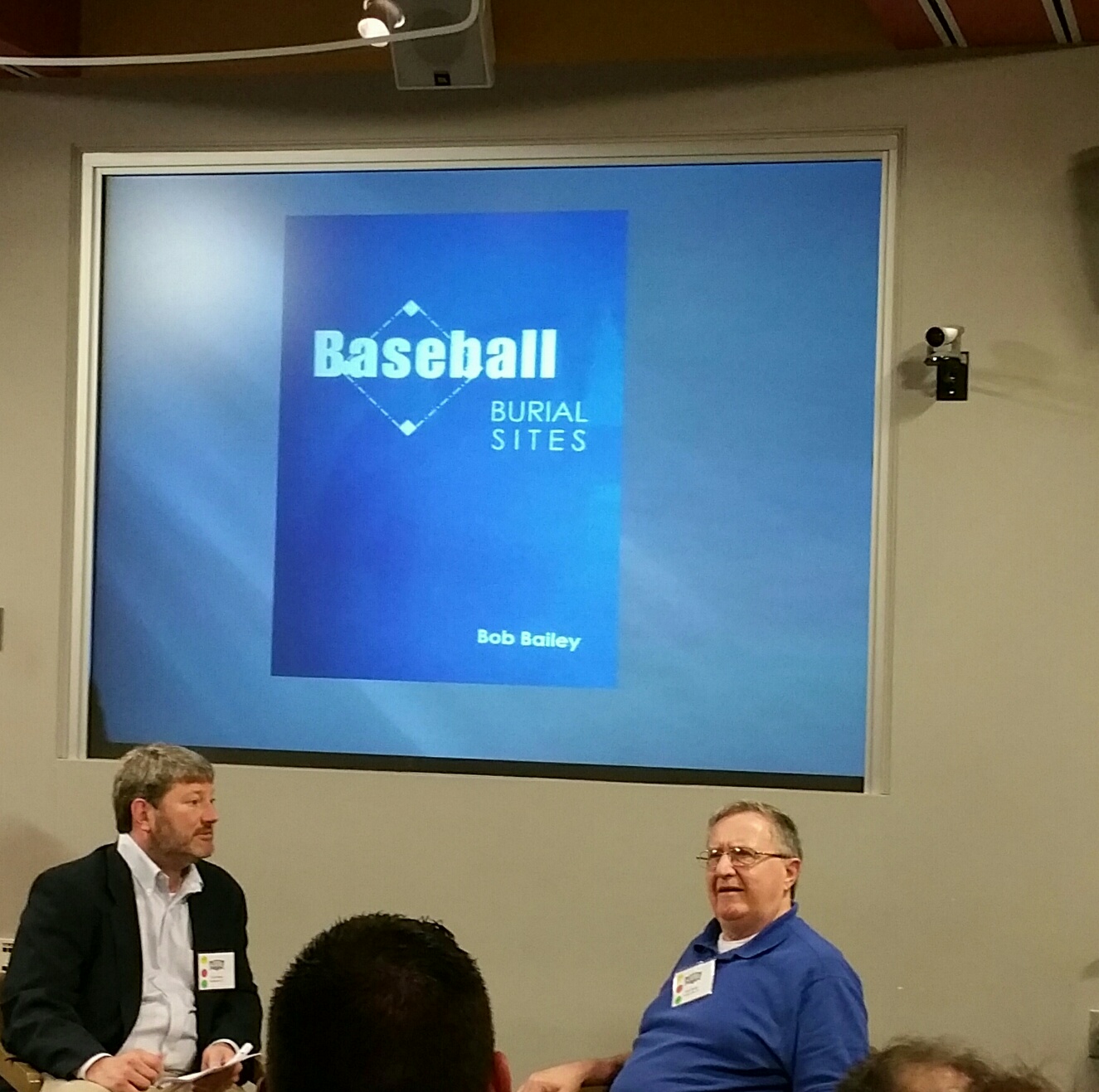2015 Frederick Ivor-Campbell 19th Century Base Ball Conference
Dirty play, the role of African Americans, media coverage, and the price of admission. The mention of these subjects would be familiar to any 21st century baseball fan.
 On April 17-18, 2015, modern fans learned those issues were quite common as far back as the 1850s. The National Baseball Hall of Fame and Museum hosted SABR’s seventh annual Frederick Ivor-Campbell 19th Century Base Ball Conference. More than 60 members attended the two-day symposium, featuring more than a dozen presentations covering various topics relating to the early days of baseball — or, as it was spelled, base ball.
On April 17-18, 2015, modern fans learned those issues were quite common as far back as the 1850s. The National Baseball Hall of Fame and Museum hosted SABR’s seventh annual Frederick Ivor-Campbell 19th Century Base Ball Conference. More than 60 members attended the two-day symposium, featuring more than a dozen presentations covering various topics relating to the early days of baseball — or, as it was spelled, base ball.
The 2015 conference was highlighted by a keynote address from baseball historian Jerrold Casway, along with a panel discussion, “Sporting News: Baseball in the 19th Century Press” with Jim Overmyer, Bob Tholkes, George Thompson, and John Thorn; a special presentation by James Brunson III on black baseball; a Member Spotlight interview of Bob Bailey by Tom Simon; plus book signings and research presentations.
“It seemed to have really been a lively conference this year,” committee chair Peter Mancuso said. “There were some presentations, I think, that really surprised a lot of people, and it really got some juices flowing in the room. It’s always gratifying to see that.
“There were certain topics that were presented that were just incredibly rich, and you say, ‘Wow, I wish we had a couple more hours to hear more about this topic.’”
One of those was James Brunson III, formerly of Northern Illinois University, whose presentation entitled “Black Aesthetic Style or Baseball Minstrelsy Reconsidered: Literary and Visual Representations, 1865-1889” drew close attention from everyone gathered in the Bullpen Theater.
Brunson has published one book on early black baseball, and another book — this one covering research on teams and individual players – is due later in 2015. John Thorn, Major League Baseball’s official historian, worked extensively with Brunson and considers this subject essential knowledge.
“I think that we know so little about black baseball prior to 1900, compared to how much we have learned about the Negro leagues and barnstorming in the 20th century. It’s reflected in how many Hall of Famers we have prior to the advent of Jackie Robinson,” Thorn said. “But we do have this dark side of the moon. Who were the blacks who were playing baseball, especially professionally, in the (1860s, 1870s, 1880s)? These men, in many cases, we have nothing more than a last name in a box score.”
Thorn emphasized that not all is lost to history and the breadth and depth of the material Brunson presented was perhaps inconceivable as little as 10 years ago.
“There is no sexy way to do this (research) but to dig,” Thorn said.
Other presentations focused on: Morgan Bulkeley, a Hall of Famer and the National League’s first president; the 1887 St. Louis Browns, noted for their willingness to do anything to win; the origins of media coverage of baseball; and former Congressman Mark Souder’s talk on the intertwined roles of baseball and politics in Washington, D.C.
One session involved an interview between committee member Tom Simon and vice chair Bob Bailey. Bailey, a longtime researcher of baseball history in Louisville and baseball players’ burial sites, was cited by Mancuso as the one who thought Cooperstown the ideal location for the conference.
“It’s a treasure trove in terms of the archives here at the Hall of Fame,” Mancuso said. “It seems that the Hall of Fame and its resources far outweigh any disadvantage of coming here. It really has captured a lot of people’s attention, and this year, the conference was filled more than a month before its due date.”
 Mancuso said that the committee sees a wide range of topics, and they can challenge one’s beliefs, knowledge and assumptions.
Mancuso said that the committee sees a wide range of topics, and they can challenge one’s beliefs, knowledge and assumptions.
“I always find that intriguing because it gets you thinking more about what you don’t know yet about 19th century baseball,” Mancuso said. He was not alone in his thoughts about gaining knowledge during the conference. Even longtime attendees feel the same way.
“It’s interesting, and I learn something new in virtually every presentation,” said Bill Lamb, who has attended all seven conferences. “I considered myself a serious baseball fan, but my knowledge was from 1901 on. You always want to know stuff you haven’t encountered before. As I got into the 19th century, the more you learn, the more you want to learn.”
Though he is the historian for MLB, Thorn said he is always learning new things at the conference but cautioned against having precast notions of baseball history.
“The charm of the 19th century is that so many things that we take for granted today reflect the decision-making 150 years ago,” he said. “Trying to live in that period a little bit and trying to imagine what it was like to decide whether three strikes were better than four or four balls were better than nine makes for a delicious view of baseball.
“It is easy to take a shorthand view and to think there is a royal road to understanding. … Things did not happen when we like to think they happened. In some cases they’re earlier, in some cases they’re later. The story is often gloriously messy rather than the product of individual invention.”
The camaraderie among attendees was also very clear. Many of the individuals have researched baseball – and facets of the early game – for years, making the conference something of an annual reunion.
“There is something about fraternity,” Thorn said. “Many of us have known each other for 20 or 30 years, and we have been laboring in isolation. It’s similar to the sabermetric crowd. You could have had all sabermetricians in the world in a hotel room 30 years ago. Now there are conferences all over the place with thousands of registrants.”
For committee member and Hall of Fame Senior Curator Tom Shieber, continued growth of the conference will benefit everyone.
“Hopefully the word gets out about this because not too many people know that this conference is around,” Shieber said. “The more people find out about it and the more that they understand that they shouldn’t be scared of it – it’s neat stuff, even if you’re not interested in 19th century baseball.
“If you’re not (interested), you’ll really learn a lot. It is pretty loose and laid back. … Usually when there are new people, they really burst on the scene and it’s exciting to see what new twists they give to things.”
Though there are no plans to revamp the Hall of Fame’s “Taking the Field” exhibit on the early days of baseball, Shieber said he might draw upon what he has learned or people that he has met at the conference to improve the exhibit were an upgrade needed.
“As a curator, part of my job is to help create exhibits but that’s just one part,” he said. “It’s also working with other researchers, answering questions, trying to help solve baseball mysteries or mysteries related to what’s in our collection.”
Thorn, too, was excited about bringing in new faces to the committee and sharing the wisdom he and other longtime researchers have gained.
“We do have younger people involved, and that’s great,” Thorn said. “And all of the older guys, like myself, who have been doing this for quite a while, are thrilled to share our materials because those people who try to hang on to facts as being their special knowledge — they won’t let other people know what they just found — are fools because it’s fool’s gold.
“The area, the province, of the historian is not in the finding of facts but in bringing perspective to them.”
As it happens, providing new perspectives on days gone by is exactly what SABR’s 19th Century Committee does.
— Matt Rothenberg
View more photos from the conference below (courtesy of Melissa Booker, Jim Gates, and James Brunson III):
Related links:

